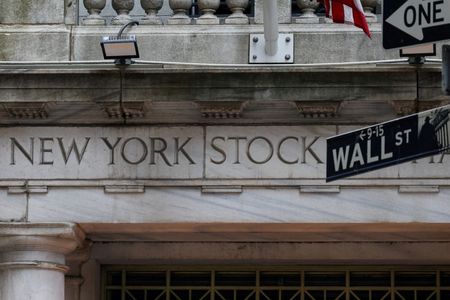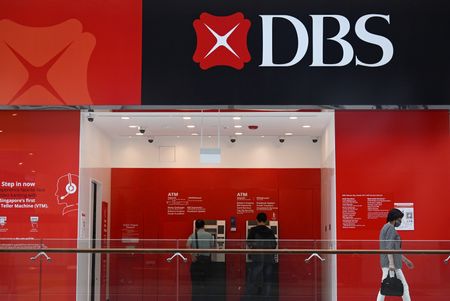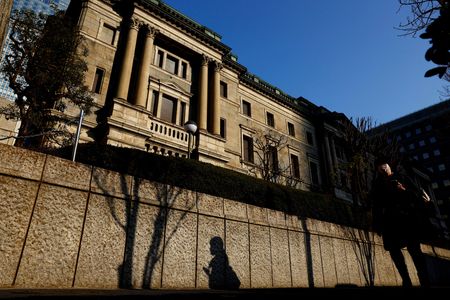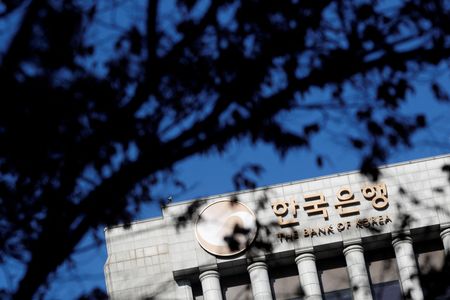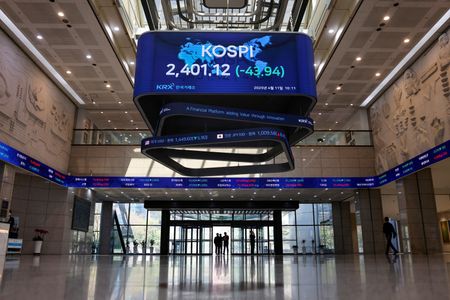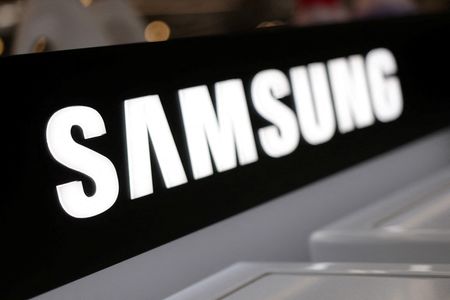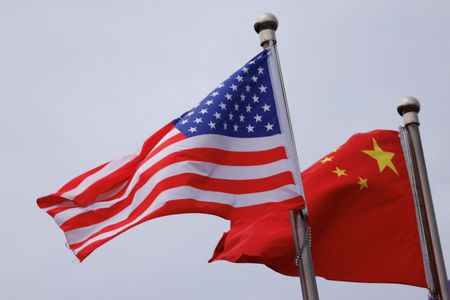By Jamie McGeever
ORLANDO, Florida (Reuters) -TRADING DAY
Making sense of the forces driving global markets
By Jamie McGeever, Markets Columnist
Wall Street rallied on Wednesday as investors continued to take their cue from earnings and AI-related optimism over tariffs, while a weak 10-year Treasury note auction served as a reminder of the precarious U.S. fiscal situation.
More on that below. In my column today I look at how investors’ apparent readiness to accept tariffs challenges the orthodoxies that have underpinned economic liberalism and world markets for the past 40 years.
If you have more time to read, here are a few articles I recommend to help you make sense of what happened in markets today.
1. Trump imposes additional 25% tariff on Indian goods,relations hit new low 2. India-U.S. spat over trade and oil threatens widerfallout 3. Lula rejects ‘humiliation’ of calling Trump overU.S.-Brazil tariff 4. Biden-era appointees could stymie Trump’s effort toreshape Fed 5. Bank of England’s long unwinding road: Mike Dolan
Today’s Key Market Moves
* FX: Dollar index falls 0.5%, its fourth straightdecline. Brazil’s real rises 0.8% to a one-month high of 5.45/$. * STOCKS: Nasdaq climbs 1.2%, the best performing majorindex on Wall St. * SHARES/SECTORS: U.S. consumer discretionary index +2.5%,consumer staples index +1.8%. Apple +5%, Super Micro Computer-18%. * BONDS: A weak 10-year Treasury auction pusheslonger-dated yields up as much as 5 bps, steepening the curve. * COMMODITIES: Oil falls for a fifth day, hits newfive-week lows after U.S. Secretary of State Marco Rubiosuggests there may be an announcement on potential sanctionsagainst Russia.
Wall St momentum calms tariff shakes
Positive investor sentiment and risk appetite were on full display on Wednesday, as optimism around corporate earnings and the U.S. tech boom again overshadowed more worrisome global developments on tariffs and growth.
Traders cheered news that ChatGPT maker OpenAI is mulling a stock sale that could value the company at $500 billion and Apple’s pledge to spend $100 billion on U.S. manufacturing. U.S. earnings continue to surprise to the upside too, and the S&P 500 consumer discretionary index rose 2.4%, its best day since May.
Wall Street stood in contrast to a more subdued global session. Benchmark Asian, emerging and European indices were all flat on Wednesday, with the Trump administration’s tariffs weighing on sentiment across the board.
The major exception was China, where blue chip stocks closed at their highest in more than three and a half years on hopes that the United States and China will strike a trade deal in the coming days.
Trade-related optimism elsewhere, however, is in much shorter supply. U.S. President Donald Trump on Wednesday slapped further import duties on India, bringing the total tariff rate to 50%, while Brazil’s President Luiz Inacio Lula da Silva told Reuters that relations with the U.S. are at a 200-year low.
Some Fed officials, meanwhile, are signaling growing unease about the U.S. labor market and economy. Minneapolis Fed President Neel Kashkari and San Francisco Fed President Mary Daly on Wednesday said interest rates should probably be lowered in the coming months.
In bonds, a weak $42 billion sale of 10-year U.S. government bonds drew the weakest demand in a year, and followed a somewhat disappointing auction of $58 billion three-year notes the day before. Thursday’s $25 billion sale of 30-year bonds will come under even greater scrutiny.
Also on Thursday, the Bank of England is widely expected to cut its key interest rate to 4% from 4.25%. But the challenges facing the Bank are significant – the fiscal outlook appears to be deteriorating sharply, and inflation is close to double the central bank’s 2% target.
Before that China announces July trade data, with economists expecting export growth to slow and the surplus to narrow. Earlier this week, official U.S. figures showed that the U.S. trade gap with China in June shrank to its lowest in more than 21 years.
Markets’ tariff resilience challenges long-standing economic orthodoxy
Investors have been living in a real-time economic experiment ever since U.S. President Donald Trump returned to the White House in January.
Whether it’s tariffs, “America First” isolationism, overt politicization of independent economic institutions, or upended global economic norms, markets are having to deal with challenges few investors have faced before.
So how are they reacting to the leader of the free world ripping up the economic playbook that has shaped the global financial system for 40 years?
Wall Street and world stocks are at record highs, U.S. high yield corporate bond spreads are the tightest since before the 2007-08 global financial crisis, and Treasuries are remarkably calm, with the 10-year yield below its average of the last two years.
It’s not all serene, of course. The U.S. “term premium” – a measure of the extra compensation investors demand for holding long-dated Treasuries over short-term debt – is the highest in over a decade. Inflation expectations and long-dated yields have shot up too.
And one needs to acknowledge that the full impact of Trump’s tariffs has yet to be fully felt.
But, at this point there has been no U.S. recession, even if growth is slowing. And the market plunge on the back of Trump’s April 2 “Liberation Day” tariff debacle lasted a few weeks.
The powerful stock market recovery since then suggests investors were less bothered by the actual tariffs than the shock of the initial announcement, the chaotic way it was delivered, and the amateurish way the levies were calculated.
This outcome is not what economic textbooks would have predicted.
ONE FOR YOU, 19 FOR ME
Tariffs are a tax.
And the overall U.S. average effective tariff rate looks likely to be around 18%, according to the Budget Lab at Yale. That’s down from an estimated 28% in May but still nearly eight times higher than the level in December.
Who will ultimately pay this tax is up for debate, but if sustained at that level, the president of the United States will have effectively imposed a tax hike worth around 1.8% of GDP, one of the largest in U.S. history.
But wait. Aren’t higher taxes bad for business, markets and growth? Don’t higher taxes sap consumers’ spending power, stunt investment and hiring, and crush the private sector’s entrepreneurial spirit?
Markets’ relatively speedy acceptance raises the question: What happened to the last 40 years of economic orthodoxy, symbolized by the so-called “Washington Consensus”?
This was the set of principles drawn up in the late 1980s that broadly mirrored the views of the Washington-based International Monetary Fund, World Bank and U.S. Treasury, ostensibly to help direct policy in Latin America but which ultimately served as the economic framework for Western liberal democracies and global markets.
They included support for privatization, deregulation, the free flow of capital, fiscal discipline, and lower taxes. They also entailed lower barriers to trade, a cornerstone of globalization.
For years these tenets were regarded by policymakers, business leaders and investors as sacrosanct. Some, like rigid adherence to tight fiscal policy, were put to the test – and shown to be flimsy, at best – during the GFC and pandemic.
So now that the tariff line has been crossed, what about other economic commandments? Could governments look to raise tax revenue from other sources, such as wealth taxes on the super rich, a “Tobin tax” on foreign exchange transactions, or other “soft” capital controls?
These are obviously anathema to the doctrine of free market capitalism. But then so were tariffs.
To be fair, we are just entering this new era. And as my colleague Mike Dolan observed earlier this week, even if tariffs don’t send the economy or markets into a tailspin, they may still lead to a “slow burn,” with many years of lost economic potential, elevated volatility and lower investment returns.
But investors aren’t looking that far ahead. What they see right now is a pretty resilient U.S. economy, solid earnings growth, and red-hot optimism around U.S. tech and AI. And some of the old orthodoxies may be in the rear-view mirror.
What could move markets tomorrow?
* Australia trade (June) * Japan earnings, including Softbank, Sony, Toyota * China trade (June) * China FX reserves (June) * Bank of England interest rate decision * Germany trade (June) * Germany industrial production (June) * U.S. weekly jobless claims * U.S. Treasury auctions $25 bln of 30-year bonds * U.S. earnings including Eli Lilly, ConocoPhillips, GileadSciences, Motorola * Atlanta Fed President Raphael Bostic speaks
Want to receive Trading Day in your inbox every weekday morning? Sign up for my newsletter here.
Opinions expressed are those of the author. They do not reflect the views of Reuters News, which, under the Trust Principles, is committed to integrity, independence, and freedom from bias.
(By Jamie McGeever; Editing by Nia Williams)

